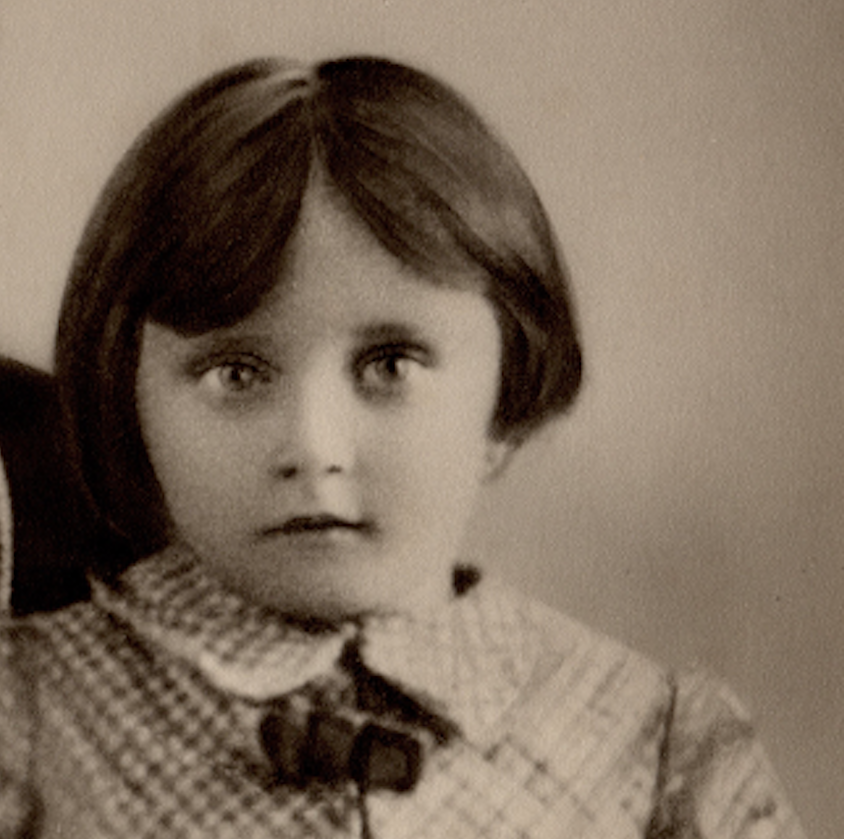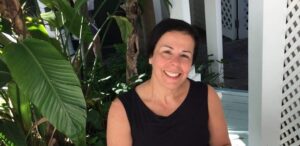by Second Generation Storykeeper Ellen Kaidanow
Our names are a foundational connection to identity and family. In this Slice, Ellen tells her mother-in-law’s journey into hiding during the Holocaust which included changing her name from “Shifra” to “Marusia”
Shifra’s father decided to build a secret hiding place, or bunker, in their ghetto house where they could hide the next time there was an aktion. He put a free-standing linen closet in front of the opening to hide the entrance. The bunker was about 10 feet x 10 feet and would only hold the eleven of them, plus a little space to store some dried-out bread, potatoes and “water pills” that would turn urine into drinkable water in an emergency. The families practiced hiding in the bunker and being absolutely silent for long periods of time.
Lena, Shifra’s nanny was an upstander. Lena was a Christian and thus did not have to move to the ghetto. She would come to the ghetto walls from time to time and secretly sneak food to Shifra and her family. At one point, Lena told Shifra’s parents that she was willing to take one of their children into hiding with her. It was decided that Lena would smuggle Shifra out of the ghetto, pretending to the outside world that she was Lena’s illegitimate daughter.
Plans for this were underway when word came that there would be a final aktion. The ghetto was to be liquidated and everyone would be killed. There was terrible panic and chaos as everybody scrambled to run for their hiding places. Everyone in Shifra’s house headed for their bunker. Word came that Lena was at the gate waiting to take Shifra. Shifra’s father grabbed her but she resisted. Her father picked her up and carried her to the gate, kissing her and crying as he handed her over to Lena. He didn’t know if he would ever see his beautiful daughter again. There was no chance for Shifra to say goodbye to the rest of her family – everything happened so fast.
Lena took Shifra’s hand and they set off together. Lena instructed Shifra that if anyone asks who she is, she is to say that she is Lena’s daughter, and her name is Marusia Dudzinsky. Marusia was a common Christian name – in English it would be Mary — and Dudzinsky was Lena’s last name.
Shifra had now become Marusia.
Lena and Marusia continued to walk silently away from the ghetto and were stopped by a Ukrainian policeman who took them to a police station. He sat Lena and Marusia down on a bench in a waiting area and then he was called away. There was a cleaning woman mopping the floor who looked at Lena and said urgently in
Ukrainian, “Why are you just sitting there?! He’s gone – run!” Lena grabbed Marusia and ran out of the police station. They ran, then they walked and eventually they hitchhiked a ride.
Lena did not speak so Marusia had no idea where she was going. She trusted Lena as she held her hand. All Marusia had was the dress on her back and the inner knowledge that to save her life, she should not say a word.
Lena and Marusia stayed with Lena’s brother at his two-room farmhouse. Marusia hid on a cement ledge behind the cooking stove because it was warm. Lena stayed by her side and slept close by. It was a scary time. Lena’s brother was afraid to hide Marusia – if found out he and his family would be executed for hiding a Jew. He insisted that Lena take Marusia back to the ghetto. So Lena went back to Dubno alone first to see if it was safe to take her back.
Lena found that indeed the ghetto had been liquidated, so she went to the family’s neighbor where the family had stored their most valuable possessions, but the woman of the house refused to give her anything other than Marusia’s favorite silver spoon saying, “Get out of here or I will tell the authorities that you are hiding a Jewess.” Lena took the spoon and returned to her brother’s farm. She never told Marusia directly that her entire family had been killed, but Marusia overheard Lena tell her brother, “There was nobody to take her back to – they are all gone.” Marusia knew what this meant.
Read a Slice about the family’s return to Dubno more than 70 years later
Read more about Second Generation Storykeeper Ellen Kaidanow






